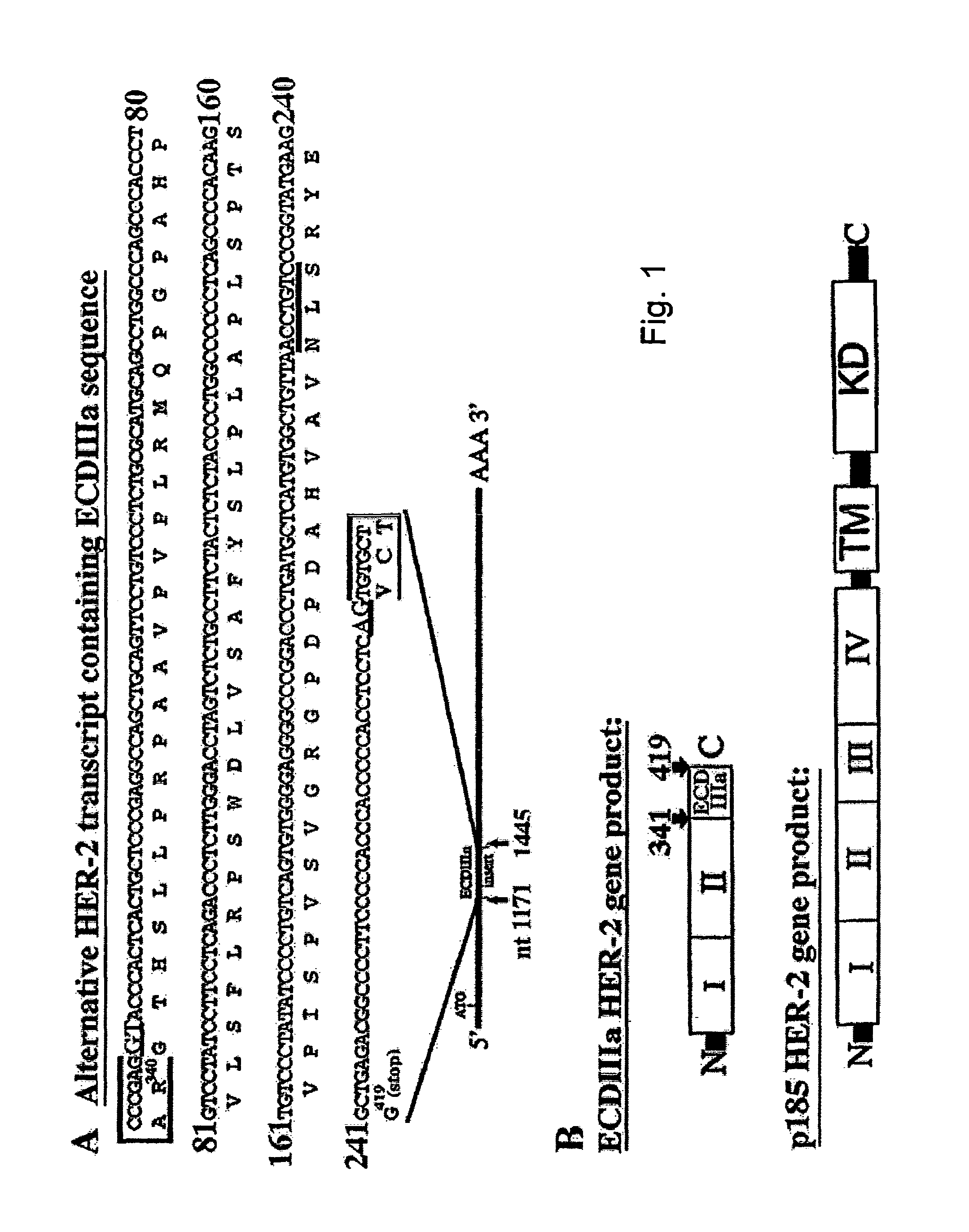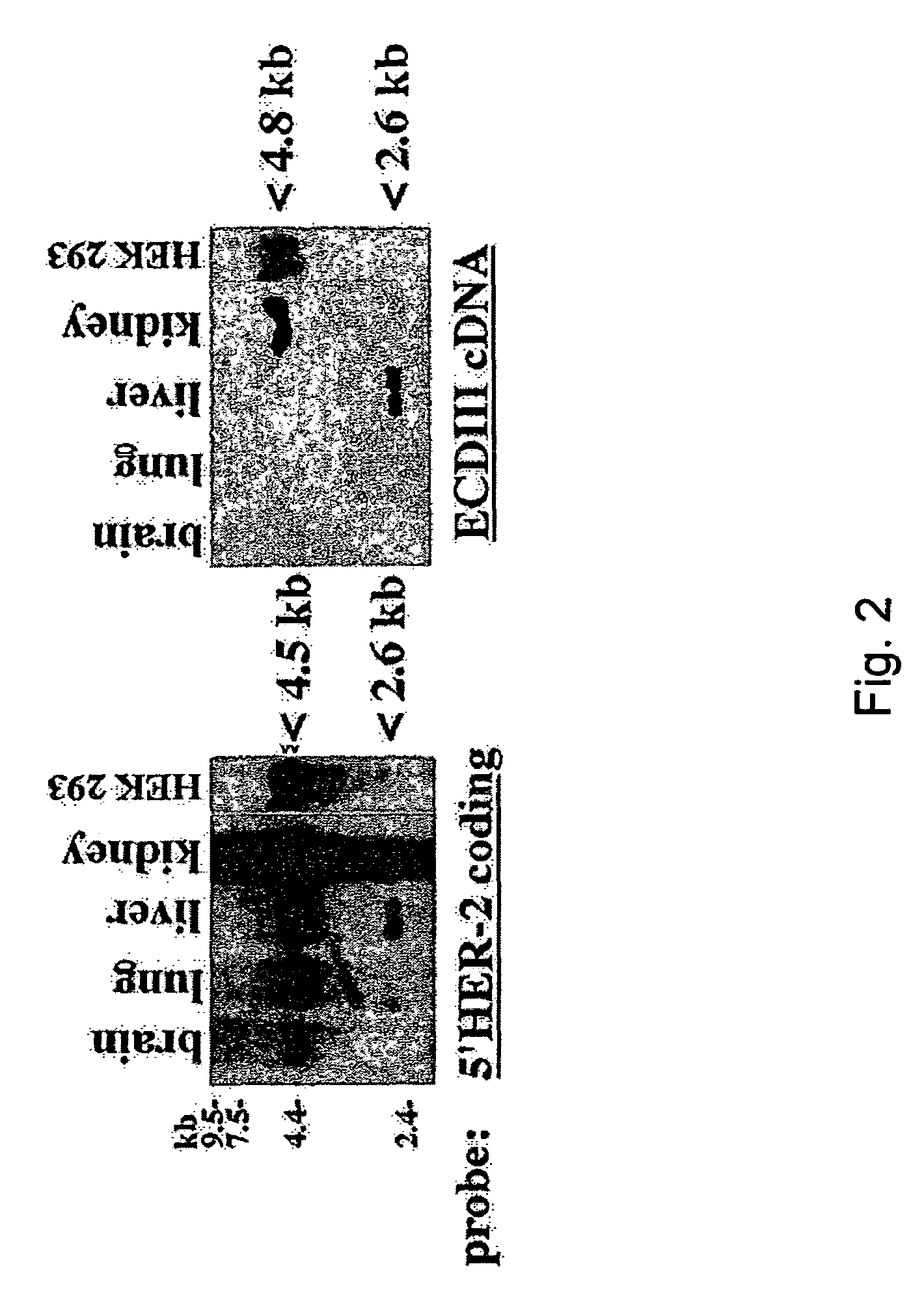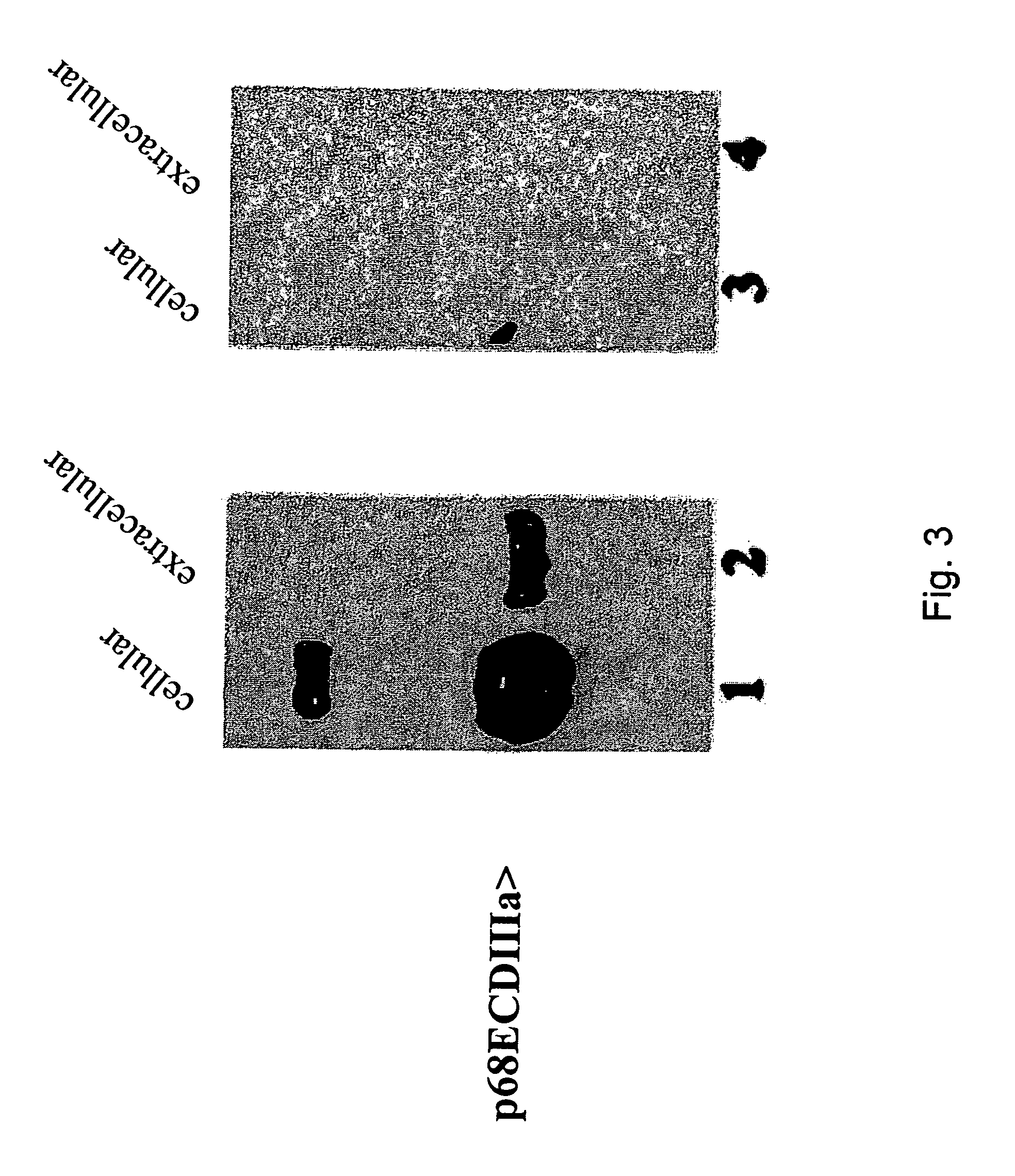HER-2 binding antagonists
- Summary
- Abstract
- Description
- Claims
- Application Information
AI Technical Summary
Benefits of technology
Problems solved by technology
Method used
Image
Examples
example 1
[0040]This example provides the results from an experiment to investigate HER-2 mRNA diversity within the extracellular domain (ECD) coding sequence using polymerase chain reaction (PCR). A cDNA library from SKOV-3 cells (American Type Culture Collection (Rockville, Md.) maintained in DMEM, supplemented with 10% fetal bovine serum and 0.05% gentamycin), an ovarian carcinoma cell line in which the HER-2 gene is amplified eight times (Tyson et al., Am. J. Obstet. Gynecol. 165:640-646, 1991) was examined using a forward primer specific for exon 1 (Tal et al., Mol. Cell. Biol. 7, 2597-2601, 1987) identical to nucleotides 142-161 and a reverse primer complementary to nucleotides 1265-1286 in exon 9 (Scott et al., Mol. Cell. Biol. 13:2247-2257, 1993). Briefly, The SKOV-3 cDNA library was provided by Origene Technologies, Inc. (Rockville, Md.), and was prepared from RNA extracted from SKOV-3 cells. RNA was extracted from SKOV-3 cells grown to 80% confluence on 15 cm plates with TriReagent ...
example 2
[0048]This example provides the results from experiments characterizing ECDIIIa as contiguous with HER-2 exons in the genome. To investigate the HER-2 gene structure in the region of the ECDIIIa sequence, a forward primer, identical to nucleotides 763-785, and a reverse primer, complementary to nucleotides 1265-1286 of the HER-2 cDNA, were used in the PCR on human genomic DNA. The amplification product was anticipated to span exon 5 (Tal et al., Mol. Cell. Biol. 7:2597-2601, 1987) to an exon which is immediately 3′ of the ECDIIIa sequence. Intron number and sizes were estimated based on PCR product sizes, restriction digest analysis, and partial sequence analysis of amplification products.
[0049]Next, human genomic DNA was examined using HER-2 exon-specific primers that directly flank the insert to determine the sequences immediately flanking the ECDIIIa sequence. A ˜430 bp product was amplified from normal human genomic DNA and from genomic DNA extracted from carcinoma cell lines SK...
example 3
[0050]This example shows that ECDIIIa is the only retained intron within the coding sequence of HER-2 mRNA. To determine whether additional introns were retained in the mRNA containing the ECDIIIa insert sequence, the reverse transcriptase-polymerase chain reaction (RT-PCR) was employed. First, a forward primer identical to 5′ HER-2 cDNA sequence at 142-161 which spans the initiation codon, and a reverse primer complementary to the 3′ ECDIIIa sequence were employed with SKBR-3 and SKOV-3 cDNA. A product of 1.3 kb was amplified, which is the size expected if the product contained no introns other than intron 8. Amplification of the 3′HER-2 coding sequence was then performed using a forward primer identical to 5′ ECDIIIa sequence and a reverse primer complementary to 3′HER-2 cDNA sequence at nucleotides 3898-3919, which spans the p185HER-2 termination codon. A product of 2.9 kb was amplified, which is the size expected from the HER-2 cDNA if no additional introns were retained.
[0051]F...
PUM
| Property | Measurement | Unit |
|---|---|---|
| Binding constant | aaaaa | aaaaa |
| Length | aaaaa | aaaaa |
Abstract
Description
Claims
Application Information
 Login to View More
Login to View More - R&D
- Intellectual Property
- Life Sciences
- Materials
- Tech Scout
- Unparalleled Data Quality
- Higher Quality Content
- 60% Fewer Hallucinations
Browse by: Latest US Patents, China's latest patents, Technical Efficacy Thesaurus, Application Domain, Technology Topic, Popular Technical Reports.
© 2025 PatSnap. All rights reserved.Legal|Privacy policy|Modern Slavery Act Transparency Statement|Sitemap|About US| Contact US: help@patsnap.com



